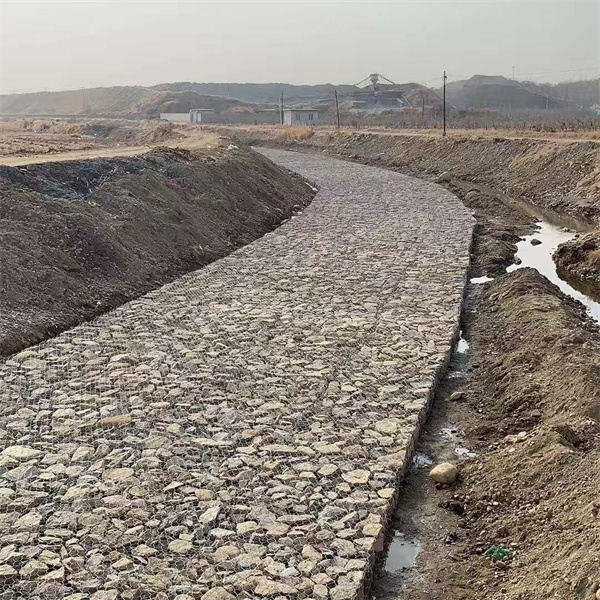Nov . 19, 2024 03:07 Back to list
Cost-effective Gabion Bridge Solutions for Durable and Sustainable Infrastructure
The Emergence of Wholesale Gabion Bridges A Sustainable Solution for Infrastructure Projects
In recent years, the demand for innovative and sustainable construction solutions has led to the rise of gabion bridge systems. Characterized by their unique design and cost-efficiency, wholesale gabion bridges are quickly becoming a popular choice among engineers, architects, and developers. This article explores the various benefits of gabion bridges, their construction process, and their role in modern infrastructure projects.
What are Gabion Bridges?
Gabion bridges are structures made from wire mesh cages filled with stone or other materials. The term 'gabion' originates from the Italian word gabbione, meaning large cage, which perfectly describes the wire containers used in this type of construction. These bridges can be utilized for pedestrian pathways, light traffic, and even as part of larger transportation networks.
Benefits of Gabion Bridges
1. Sustainability and Environmental Impact One of the primary advantages of gabion bridges is their environmentally friendly nature. The materials used to fill the gabions, such as natural stones, can often be sourced locally. This reduces the carbon footprint associated with transporting materials. Additionally, gabion structures promote vegetation growth, encouraging biodiversity and improving the local ecosystem.
2. Cost-Effectiveness Wholesale gabion systems offer significant cost savings when compared to traditional bridge construction methods. The materials used are often cheaper, and the construction process can also be less labor-intensive. With a modular design, wholesale gabion bridges can be prefabricated and transported, allowing for quicker assembly on-site.
3. Durability and Strength Gabion bridges are known for their strength. The interconnected cages filled with heavy stones create a sturdy structure capable of withstanding significant loads and environmental pressures, such as flooding and erosion. This durability makes them ideal for use in areas prone to severe weather conditions.
4. Ease of Construction The construction process of gabion bridges is simpler and quicker than that of traditional methods. The modular nature allows for easy packaging and transportation, and the installation can often be completed with minimal heavy machinery. This efficiency not only saves construction time but also reduces site disruption.
5. Aesthetic Appeal Gabion bridges can be designed to seamlessly blend into the natural landscape. The appearance of stone-filled cages provides a rustic charm that can enhance the beauty of the surrounding environment. Moreover, they can be designed with specific colors and textures to meet the aesthetic goals of a project.
wholesale gabion bridge

Construction Process
The construction of a wholesale gabion bridge involves several key steps
1. Site Assessment Before construction begins, a thorough site analysis is conducted to evaluate soil stability and environmental conditions. This assessment helps determine the most suitable design and materials.
2. Design and Engineering Engineers create a detailed plan considering load requirements, span length, and local regulations. The design phase is crucial for ensuring the bridge’s safety and longevity.
3. Fabrication of Gabions The wire mesh cages are fabricated according to the specifications of the bridge design. The wire used is typically galvanized or coated to prevent rusting.
4. Filling and Assembly Once the gabions are prepared, they are filled with stones or other suitable materials. The filled cages are then transported to the construction site, where they are assembled according to the engineered plan.
5. Final Touches After assembly, the bridge may undergo finishing processes, such as landscaping or adding guardrails, to ensure safety and aesthetic appeal.
Conclusion
Wholesale gabion bridges represent a pioneering approach to modern infrastructure. With their sustainable materials, cost-effective construction, durability, and aesthetic flexibility, they provide an innovative solution to many of the challenges faced by today’s urban planners and engineers. As the demand for sustainable and efficient construction methods continues to grow, gabion bridges are poised to become a significant player in the future of infrastructure development. By adopting these eco-friendly options, we can build better, more resilient communities while preserving the environment.
-
Visualizing Gabion 3D Integration in Urban Landscapes with Rendering
NewsJul.23,2025
-
The Design and Sustainability of Gabion Wire Mesh Panels
NewsJul.23,2025
-
The Acoustic Performance of Gabion Sound Barriers in Urban Environments
NewsJul.23,2025
-
Mastering the Installation of Galvanized Gabion Structures
NewsJul.23,2025
-
Gabion Boxes: Pioneering Sustainable Infrastructure Across the Globe
NewsJul.23,2025
-
Custom PVC Coated Gabion Boxes for Aesthetic Excellence
NewsJul.23,2025
-
Installation Tips for Gabion Wire Baskets in Erosion Control Projects
NewsJul.21,2025






